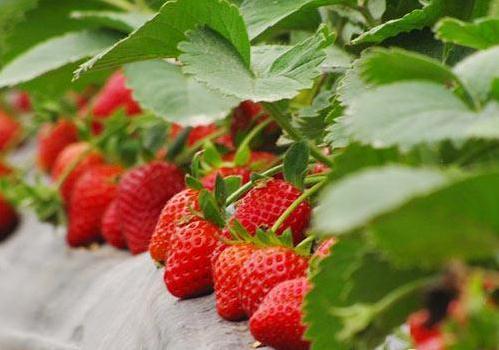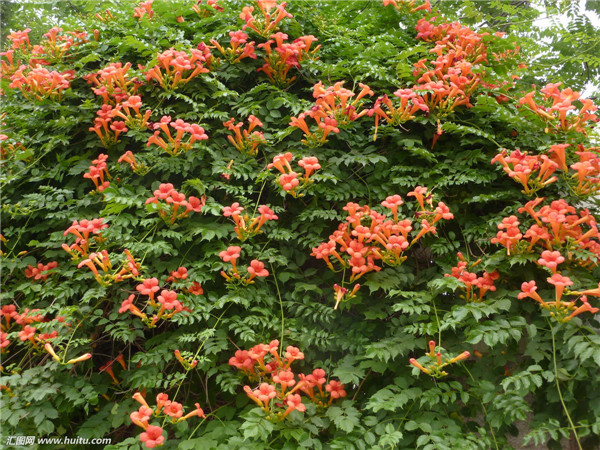Strawberry planting technology and daily management, strawberry seeds when to sow good pest control
Strawberry is one of the common water ghosts in daily life, which is not only bright red and delicious, but also has high nutritional value, and has the reputation of "fruit queen". Strawberry originated from Europe and is widely distributed in China. Strawberries become edible fruit all the year round with the development of greenhouse cultivation.

There are two propagation methods of strawberry: seed propagation and plant propagation. And ramet propagation can be divided into two types, one is rhizome ramet, the other is new stem ramet. Which method to choose can be determined according to the actual situation. 1. The strawberry orchard should choose sandy or loam soil with flat ground, slightly higher terrain, deep, loose, fertile and well-ventilated soil. The main purpose of soil preparation before strawberry planting is to remove weeds, sundries, fertilize, plough, rake and make beds. The garden can be sprayed with 1000 times of phoxim EC to control grubs, mole crickets, tigers and other pests. 2. Timely planting in the buckle shed is for the early listing, and the time for strawberry transplanting in the greenhouse should be in early September. Transplant with the seedlings. 2 rows per row, 25 cm between rows and 20 cm between holes, about 12000 plants per mu. Plant water in time and bury the exposed roots in the soil. The time of withholding shed is usually around the middle of November. When planting, the inflorescence should be oriented toward the ditch, and the planting depth should be based on the root neck and the soil surface, and the seedling heart should not be buried in the soil. 3. Watering strawberries have different requirements for water in different growth stages, such as field capacity of more than 70% during flowering, more than 80% of field capacity during fruit expansion, proper water control during berry ripening, keeping more than 70% of field capacity during flower bud differentiation, and keeping field capacity between 60% and 70% during flower bud differentiation to promote flower bud differentiation. , fruit expansion period. Strawberry needs more water and can be watered by drip irrigation to make the soil layer above 7~8cm moist. Strawberries like water and are afraid of waterlogging. If strawberry plants soak in water for too long, the leaves will turn yellow. Therefore, a good drainage system should be established around the strawberry orchard. After heavy rain, the stagnant water should be removed in time, and the field should be dry after rain. 4. The lowest temperature of flowering and fruiting stage should be above 5 ℃, the optimum temperature of strawberry plant growth is 15-25 ℃, the optimum temperature of light and action is 20-25 ℃, the optimum temperature of flowering is 15-24 ℃, the optimum temperature of flower bud differentiation is 17-25 ℃, the optimum temperature of fruit setting is 25-27 ℃, and the optimum temperature of fruit development is 18-22 ℃. 5. Light strawberry is a light-loving plant, but it is more shade-tolerant. During flower bud formation, short daylight of 10 to 12 hours a day and lower temperature are required. If 16 hours of long sunshine per day is artificially given, the flower bud will not form well and even cannot blossom and bear fruit. However, sunshine treatment after flower bud differentiation can promote flower bud development and flowering. Strawberries need 12 to 15 hours of sunshine every day during the flowering and fruiting period and the vigorous growth period.
6. the fruiting period of strawberries in fertilization greenhouse is long. in order to prevent early senescence, high-quality mature farm manure should be re-applied, topdressing in time and foliar fertilizer should be sprayed frequently. Irrigate immediately after planting. Irrigate once at the initial stage of flowering and berry growth. If there is a drought, it should be irrigated once every 5-7 days. When it is rainy in autumn, it should be drained in time. Drainage ditches should be made around the strawberry orchard so that the furrow water in the shed can be drained. Grasp the principle of frequent application of thin fertilizer, after planting live trees, irrigate 0.5% compound fertilizer solution, about 20 days after harvest, topdressing again, according to the specific situation, 0.2% potassium dihydrogen phosphate plus 0.4% urea solution can be used for extra-root topdressing. 7. In order to adjust strawberry growth period, stolon, old leaf, diseased leaf and residual calyx should be removed in time; 2-3 strong tillers per strawberry should be selected, the rest of tillers should be erased in time, and the lower florets should be removed. 8. During the flowering period of artificially pollinated strawberries, smearing the flowers with a brush at 8: 9 every morning can obviously increase the yield and the rate of good fruit. It's best to keep bees in the shed. Complete pollination. 9. The new and old leaves of strawberry plants with diseased leaves and old leaves were renewed frequently in a year. In the growing season, when the lower leaves of the plant grow horizontally and begin to turn yellow and wilt, they should be removed from the petiole base in time. For the overwintering old leaves, the pathogen is often parasitized, and should be removed as soon as possible after the new leaves grow, so as to facilitate ventilation and light transmission and accelerate plant growth. It is found that the diseased leaves should also be removed, and the weak lateral buds on the plant should also be removed in time. Removed diseased leaves and old leaves should not be left in the strawberry orchard, should be collected together burned or buried, in order to reduce the spread of pathogens.
10. Prevention and control of diseases and insect pests in low temperature and rainy weather, strawberries are prone to gray mold. 50% Sukeling wettable powder 1000-1500 times can be used for spray control; for powdery mildew, 20% trimethoprim EC 3000-4000 times can be used to control powdery mildew. In addition, we should also pay attention to timely prevention and control of aphids. 11. Comprehensive prevention and control of diseases and pests is also low temperature and rainy weather, strawberries are prone to gray mold. 50% Sukeling wettable powder 1000-1500 times can be used for spray control; for powdery mildew, 20% trimethoprim EC 3000-4000 times can be used to control powdery mildew. In addition, we should also pay attention to timely prevention and control of aphids. Agricultural control is the main control of strawberry diseases and insect pests in greenhouse, supplemented by chemical control. The occurrence of diseases and insect pests can be prevented by selecting disease-resistant varieties, cultivating virus-free strong seedlings, high ridge planting, plastic film mulching, reasonable crop rotation, cleaning soil, avoiding drought, high humidity and so on. If diseases are found, attention should be paid to the unsuitable use of drugs before and after flowering, so as not to affect pollination and increase the number of abnormal fruits. High efficiency, low toxicity and low residue pesticides should be selected and the pesticide dosage and safety interval should be strictly controlled. 12. Spraying 10 × 10-6 red toxin solution during the growth and flowering of the first heart leaf of strawberry could not only increase the yield, but also improve the fruit quality. 13. Strawberries are harvested at the right time, usually at 8-10:00 or 4-6 p.m. Generally do not pick fruit and sun-heated fruit, so as to avoid decay and deterioration. When harvesting, handle it gently and do not damage the calyx.
Time: 2019-05-04 Click:
- Prev

What are the breeding methods of Dragon Blood Tree? Pictures and culture methods of dragon blood tree
The breeding method of dragon blood tree: the best breeding time: the dragon blood tree generally uses the cutting method to raise seedlings. The time can be chosen from May to June, when it is the exuberant growth period of the dragon blood tree, and it is very easy to survive after cutting. The best growing soil: small earthen pottery flowerpots can be used in dragon blood seedling bed.
- Next

What is the reason why the flowers do not bloom? the flowers maintained in this way will blossom continuously.
Lingxiao is a very good foliage and flowering plant, and its vines grow very fast. When Lingxiao is in bloom, its ornamental value is very high. What are we going to do when our home-raised Lingxiao does not blossom?
Related
- Fuxing push coffee new agricultural production and marketing class: lack of small-scale processing plants
- Jujube rice field leisure farm deep ploughing Yilan for five years to create a space for organic food and play
- Nongyu Farm-A trial of organic papaya for brave women with advanced technology
- Four points for attention in the prevention and control of diseases and insect pests of edible fungi
- How to add nutrient solution to Edible Fungi
- Is there any good way to control edible fungus mites?
- Open Inoculation Technology of Edible Fungi
- Is there any clever way to use fertilizer for edible fungus in winter?
- What agents are used to kill the pathogens of edible fungi in the mushroom shed?
- Rapid drying of Edible Fungi

